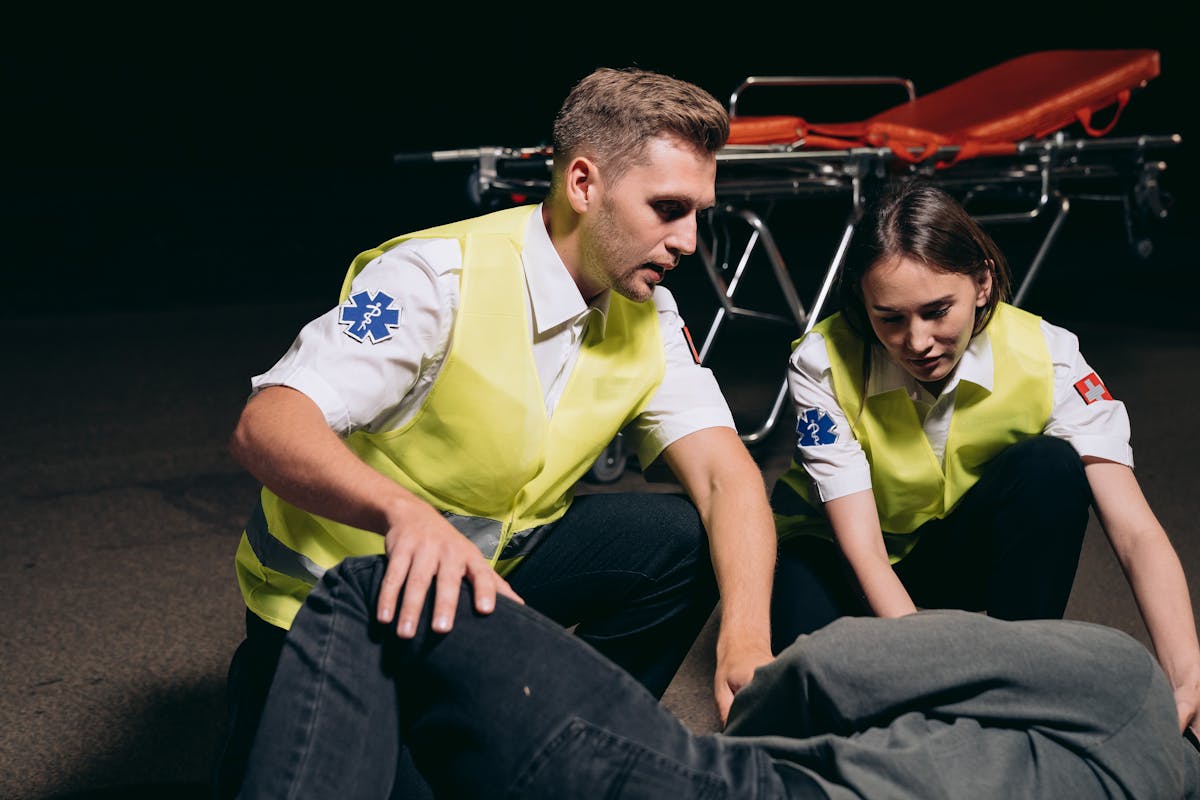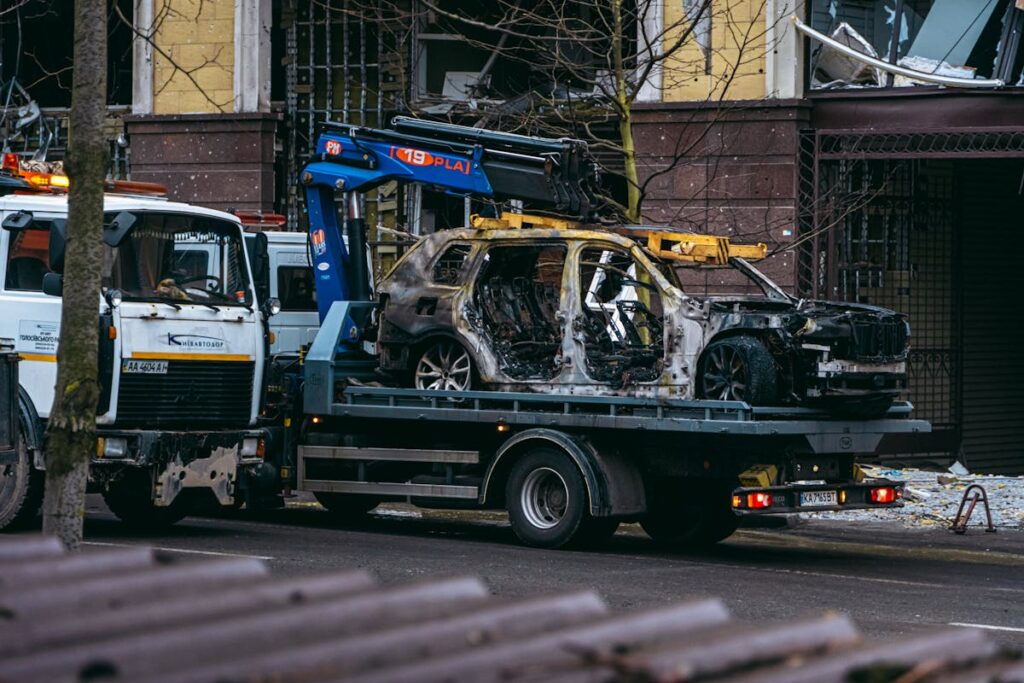The multifaceted complexities of multi-vehicle pileups and mass casualties present pertinent lessons for various stakeholders, from motorists to policymakers. These incidents, often catastrophic, serve as stark reminders of the areas demanding attention – whether it’s driver behavior in challenging weather conditions, infrastructural enhancements, or the efficacy of coordinated emergency response. Additionally, the aftermath for survivors, laden with psychological and financial burdens, emphasizes the need for robust support mechanisms. As we dissect these aspects, the objective remains to minimize future occurrences and their devastating impacts.
Understanding Multi-Vehicle Pileups
Deciphering the chaos of multi-vehicle pileups demands a thorough and analytical approach. A number of variables contribute to the occurrence of such devastating accidents. Two essential components are driver behavior and weather conditions.
Driver behavior is a principal factor in multi-vehicle pileups. High-speed driving, tailgating, distractions, and impaired driving greatly increase the probability of these catastrophic incidents. From a statistical standpoint, erratic or aggressive driving is often the precipitating factor in pileup scenarios.
Weather conditions also play a vital role. Factors such as fog, rain, snow, or icy conditions can severely affect visibility and road grip, leading to multi-vehicle accidents. Sudden weather changes can catch drivers off-guard, decreasing their response time and consequently escalating the risk of pileups.
Understanding the intricate interplay of these factors allows for the development of strategies to mitigate the occurrence of multi-vehicle pileups. As an analytical framework, it sets the foundation for extensive discussions about the prevention of these accidents. The importance of analyzing multi-vehicle pileups cannot be overstated, as it directly influences policy decisions and informs the development of safer driving practices.
Common Causes of Pileups
Building upon our understanding of multi-vehicle pileups, it becomes clear that identifying the common causes is a key step towards prevention. Pileups often occur when a multitude of factors converge, creating a hazardous situation that can rapidly spiral out of control.
Adverse weather conditions, such as fog, rain, or snow, can severely impair visibility and create slippery surfaces, thereby increasing the risk of multi-vehicle incidents. Driver negligence is another significant factor, with behaviors such as exceeding speed limits, tailgating, or failing to adapt to conditions often playing a role. In addition, distraction factors, such as mobile phone use or in-car entertainment, can divert attention from the road, leading to delayed reaction times.
Infrastructure also plays a role, as poor road maintenance can create hazards that trigger pileups. Similarly, high traffic volume can exacerbate these issues, particularly if there is inadequate capacity to handle the volume safely. Visibility issues, either due to weather, inadequate lighting, or obstructions, further complicate matters.
Understanding these issues is crucial in formulating strategies to prevent pileups, emphasizing the importance of cautious driving, proper road maintenance, and effective traffic management.
Analysis of Notable Incidents
In the pursuit of a thorough understanding of multi-vehicle pileups, an examination of notable historical incidents is essential. This analysis not only provides insights into casualty management strategies that have been previously deployed but also highlights areas for improvement. With this information, more effective preventative measures for future pileups can be formulated and implemented.
Historic Pileup Incidents Review
Delving into a retrospective analysis of historic pileup incidents offers insightful revelations about the commonalities and differences, punctuating these notable events. Examining these occurrences in their historical context provides a clearer understanding of the circumstances leading to these disasters, contributing considerably to our knowledge base.
For instance, the 1990 Sacramento fog-related pileup incident involving 104 vehicles provides a vivid demonstration of the dangers of reduced visibility. Accident statistics reveal that this incident resulted in 17 fatalities and 150 injuries, making it one of the deadliest pileups in U.S. history.
Similarly, in the United Kingdom, the 2011 M5 motorway accident, involving 34 vehicles, elucidated the risk factors of night driving and fireworks smoke. The statistics associated with this accident were grim, with 7 fatalities and 51 injuries.
These incidents, amongst others, underscore the unpredictable and multifaceted nature of pileup accidents. They reveal certain commonalities, such as adverse weather conditions and impaired visibility, but also highlight the unique circumstances inherent to each accident.
Casualty Management Strategies
Analyzing the historic pileup incidents brings to light the urgent need for effective casualty management strategies, a subject that warrants our undivided attention. Central to these strategies is the concept of casualty triage, a component vital in determining the order of treatment for injured individuals based on the severity of their conditions. The aim is to maximize survival rates by prioritizing those most in need.
In notable incidents such as the 1990 Caldecott Tunnel fire and the 2002 Paris ring road pileup, efficient casualty triage was instrumental in managing the crises. Rapid assessment and categorization of injuries guided emergency personnel in providing immediate aid and determining evacuation priority.
Resource allocation, another fundamental aspect of casualty management, requires strategic planning and coordination. In the event of a pileup, resources – both human and material – are inherently limited. Therefore, effective resource allocation aims for the optimum use of available assets to attend to the casualties. This involves assigning medical personnel, distributing supplies, and designating treatment areas in a manner that guarantees the greatest number of lives saved.

Preventing Future Pileups
While it is essential to have effective casualty management strategies in place, one cannot overemphasize the importance of preventive measures to curb the occurrence of multi-vehicle pileups. Education plays a fundamental role in this scenario, especially driver education. It can equip individuals with the necessary skills and knowledge to navigate complex traffic situations and reduce the likelihood of incidents.
A detailed analysis of notable incidents reveals that many pileups occur due to poor weather conditions. This underlines the critical importance of weather preparedness. Drivers should be trained to adapt to various weather conditions, and real-time weather updates must be made available to them. Infrastructure improvements, such as the installation of weather-responsive traffic management systems, can also help in managing traffic effectively during adverse weather conditions.
Furthermore, technological advancements like collision avoidance systems, automatic braking, and vehicle-to-vehicle communication can greatly lower the risk of multi-vehicle pileups. To summarize, while immediate response to pileups is essential, the emphasis should be on proactive measures – driver education, weather preparedness, infrastructure improvements, and the use of advanced technology – to prevent such incidents.
Impact on Survivors and Families
The aftermath of multi-vehicle pileups extends far beyond the immediate scene, often leaving a lasting impact on survivors and their families. Emotional trauma, coupled with financial struggles, are two significant challenges that survivors frequently face. Understanding and addressing these issues is paramount in providing thorough support for those affected.
Emotional Trauma Post-Accident
Despite the physical injuries being the most immediate and visible consequences of multi-vehicle pileups, emotional trauma often lingers, greatly impacting survivors and their families. The shock and distress caused by such tragic events can lead to psychological disorders and hinder the process of emotional recovery. Trauma counseling plays an essential role in helping victims manage their emotional pain and regain their mental health.
The emotional trauma post-accident can manifest in various ways:
- Anxiety disorders, including post-traumatic stress disorder (PTSD)
- Depression and suicidal thoughts
- Survivor’s guilt, especially when there were fatalities involved
- Phobias and fears, particularly related to driving or riding in vehicles
- Social isolation due to the stigma associated with mental health problems
Each of these manifestations represents a significant barrier to the victims’ healing process. Consequently, trauma counseling should be seen not as an option but a necessity for survivors and their families. It provides a safe environment for victims to express their feelings, understand their emotions, and learn resilience-building strategies. The emotional wounds left by multi-vehicle pileups are deep and painful, but with the right psychological support, survivors can reclaim their lives and move forward.
Financial Struggles and Support
Beyond the emotional trauma, survivors of multi-vehicle pileups and their families often face substantial financial struggles. The financial impact of these accidents encompasses various aspects, including medical bills, loss of income, and property damage. In many cases, these costs can be overwhelming, leading to a significant amount of debt.
Financial assistance is often necessary for survivors to manage these burdens. This assistance can come in various forms, such as insurance payouts, compensation from lawsuits, and government aid. However, these sources may not be enough to cover all expenses, particularly if the survivors have sustained severe injuries requiring long-term medical care.
Community support also plays an essential role in helping survivors and their families cope with financial struggles. This support can include fundraising efforts, donations, and volunteer work, which can help alleviate some of the financial stress. Such community initiatives not only provide financial relief but also show moral support, which can be invaluable in these circumstances.
Emergency Response Strategies
When multi-vehicle pileups occur, swift and strategic emergency response is critical to mitigating damages and saving lives. Key to such a response is the ability to quickly and effectively communicate during a crisis and efficiently allocate resources.
Crisis communication is pivotal in coordinating rescue efforts and alerting the public about the situation. It includes not only inter-agency communication but also communication with the public. This can be through various channels like social media, emergency alerts, and news outlets.
Resource allocation is the strategic distribution of emergency services and resources based on the severity and scale of the accident. This is a dynamic process that requires continual reassessment as the situation evolves.
Some key strategies include: – Rapid assessment of the situation to determine initial resource allocation. – Establishing crisis communication channels, both internally and externally. – Coordinating with local hospitals to guarantee adequate medical support. – Utilizing traffic management systems to control surrounding traffic and create safe access for emergency services. – Regular updates and reassessment of resource allocation to match the changing needs of the situation.
These strategies, when effectively implemented, can greatly reduce the impact of multi-vehicle pileups and increase the likelihood of saving lives.
Lessons From Mass Casualty Events
Mass casualty events, such as large-scale multi-vehicle pileups, provide invaluable lessons for emergency responders and policy makers. These incidents demand robust, coordinated responses that test the limits of disaster management systems, and critically, the resilience of the affected communities. The analysis of such events often leads to a significant evolution in strategies and protocols aimed at mitigating the impact of future incidents.
Survivor testimonies play an essential role in this learning process. These firsthand accounts offer valuable insights into the chaos and confusion that typically characterize mass casualty events. They highlight the need for effective communication, efficient triage procedures, and rapid medical intervention. In addition, survivor testimonies emphasize the importance of psychological support, underscoring the need for detailed trauma care that addresses both physical injuries and mental health needs.
Community resilience is another key lesson. The capacity of a community to adapt and recover following a mass casualty event is paramount. This resilience is cultivated through strong social networks, robust local resources, and efficient systems for communication and coordination. As a result, emergency planning must prioritize enhancing community resilience, fostering a collective ability to withstand, adapt to, and recover from such events.
Improving Road Safety Measures
In light of the lessons learned from multi-vehicle pileups, it becomes evident that proactive efforts in improving road safety measures are essential to reduce the frequency and impact of such incidents. Enhancements to road infrastructure, coupled with thorough driver education, can play a pivotal role in this regard.
Through an analytical lens, we can identify key areas of focus:
- Investment in road infrastructure: Upgrading roads, improving lane markings, and implementing traffic calming measures can considerably reduce incidents.
- Driver education and training: Thorough driver education that includes defensive driving techniques and understanding of traffic rules can greatly minimize risk.
- Enforcement of traffic laws: Stricter enforcement of traffic laws can deter dangerous driving behaviors.
- Vehicle safety standards: Regular vehicle safety checks and adherence to safety standards can prevent accidents caused by vehicle malfunction.
- Use of technology: Utilizing technology for real-time traffic updates and collision warning systems can help prevent pileups.
Future of Traffic Management
As we look towards the future of traffic management, it becomes apparent that emerging technologies and innovative strategies hold immense potential to revolutionize the way we navigate our roads. The implementation of smart traffic and automated systems, powered by real-time monitoring and predictive modeling, will bring significant changes.
Advanced data analytics will play an essential role in this transformation by providing valuable insights that can drive urban planning, congestion management, and vehicle communication. This approach will not only help to manage traffic flow efficiently but also guarantee safety by preventing multi-vehicle pileups and mass casualties.
The ability of these systems to predict and manage traffic patterns will be instrumental in decreasing congestion, reducing travel time, and improving the overall driving experience. Additionally, the integration of vehicle communication systems will facilitate better information exchange between vehicles, enabling them to respond promptly to changes in traffic conditions.
In essence, the future of traffic management is heading towards a more data-driven, predictive, and automated approach. This shift, however, will require careful planning and execution to guarantee that the benefits of these technologies are fully realized and the potential challenges are adequately addressed.
Frequently Asked Questions
How Can Individuals Prepare for Potential Multi-Vehicle Pileups?
Individuals can prepare for potential multi-vehicle pileups by maintaining emergency kits in their vehicles and adhering to safe driving practices, such as keeping a safe distance and monitoring weather conditions closely.
What Are the Psychological Impacts on First Responders to Pileups?
First responders to pileups often face significant psychological impacts, including trauma and stress disorders. Emotional resilience is vital in mitigating these effects, and providing trauma support is imperative to guarantee their mental health and wellbeing.
How Often Are Drivers Under the Influence Involved in Multi-Vehicle Pileups?
According to accident statistics, drivers under the influence considerably contribute to multi-vehicle pileups. Precise frequency varies, but studies suggest drunk driving is involved in approximately 30-40% of such catastrophic collisions.
What Role Does Weather Play in the Occurrence of Mass Casualty Events?
Weather conditions considerably influence the occurrence of mass casualty events. Adverse weather, such as fog or heavy rain, can lead to visibility issues, increasing the likelihood of accidents including multi-vehicle pileups.
Are There Specific Driving Courses to Train for Pileup Situations?
Yes, there are specific courses focusing on defensive driving techniques, which are designed to prepare drivers for pileup situations. These courses teach emergency response skills to react quickly and appropriately to unexpected driving conditions.

